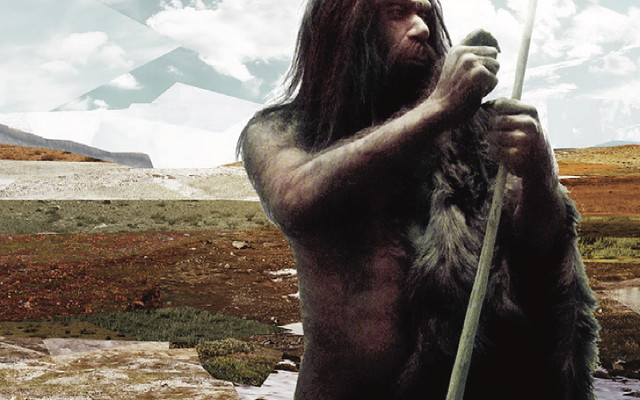Neanderthals (UK: /niˈændərˌtɑːl/, also US: /neɪ-, –ˈɑːn-, –ˌtɔːl, –ˌθɔːl/;[4] also Neanderthal Man, taxonomically Homo neanderthalensis or Homo sapiens neanderthalensis[5]) were archaic humans who lived in Eurasia during roughly 250,000 to 40,000 years ago.[6][7][8][9] They seem to have appeared in Europe and expanded into Southwest and Central Asia. They are known from numerous fossils, as well as stone tool assemblages. Almost all of those younger than 160,000 years are of the so-called Mousterian techno-complex, which is characterised by tools made out of stone flakes.[10] The type specimen is Neanderthal 1, found in Neander Valley in the German Rhineland, in 1856.
Compared to modern humans, Neanderthals were stockier, with shorter legs and a bigger body. In conformance with Bergmann’s rule, this likely was an adaptation to preserve heat in cold climates. Male and female Neanderthals had cranial capacities averaging 1,600 cm3 (98 cu in) and 1,300 cm3(79 cu in), respectively,[11] within the range of the values for anatomically modern humans.[12] Males stood 164 to 168 cm (65 to 66 in) and females 152 to 156 cm (60 to 61 in) tall.[13]
Since 2010, evidence for substantial admixture of Neanderthals DNA in modern populations has accumulated. Evidence of admixture was found in both European and Asian populations, but not in Africans, suggesting that interbreeding between Neanderthals and anatomically modern humans took place after the recent “out of Africa” migration, likely between 60,000 and 40,000 years ago.[14]
(From Wikipedia, June 2018)


